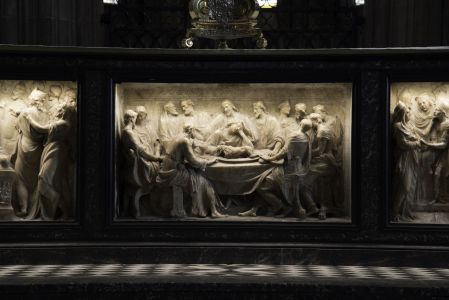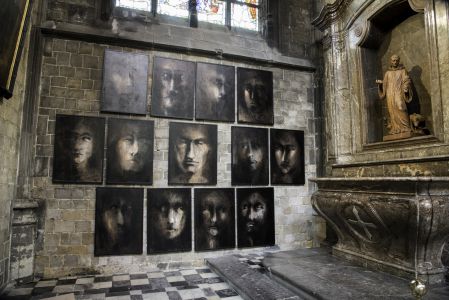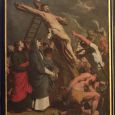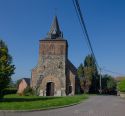Collegiate Church | 1450-1621 | Gothic | Catholic Church





Map
Opening hours
01 January - 31 December
Mon 9.00 - 18.00
Tue 9.00 - 18.00
Wed 9.00 - 18.00
Thu 9.00 - 18.00
Fri 9.00 - 18.00
Sat 9.00 - 18.00
Sun 9.30 - 18.00
Treasury : from Tuesday to Sunday : 12 am - 6 pm
Disabled people : call +32 65 33 73 75
Guided tour
On request (10 people min) : +32 65 33 55 80
Religious offices
Monday to Friday : 12.05 am
Sunday : 11 am
no visit during Divine services
Description
This collegial church of Mons is impressive, sitting on the heights of the city, near the watchtower: 110 metres long, 34 m wide, 24.5 m high. It is a very beautiful edifice in the Gothic style whose construction spread from 1450 to 1686. The church was dedicated to Saint Waltrude, who in the 7th century founded on this hill in Mons a small religious community that later became a noble chapter of canonesses.
In the interior, surrounding the choir, seven statues by sculptor Jacques Du Broeucq representing the virtues. It is up to you to guess which ones… Beautiful stained glass windows of the 16th century. Numerous chapels, formerly headquarters of corporations. Reliquaries of Saint Waltrude.
You will also notice at the back of the church the unusual presence of a vehicle of painted and gilded wood in Louis XVI style. It is the “Golden Coach”, precious to the hearts of the people of Mons. This coach has its day of glory on Trinity Sunday. The reliquary contains the relics of Waltrude; the patron saint comes out in procession in the streets of the city, exhibited on this golden coach. At the end of the procession, drawn by solid horses, with a single running jump it has to go back up the steep path that borders the collegial church, pushed and followed by an innumerable and effervescent crowd. If the climb happens without a hitch, the year, they say, will be a good one for the City.
It took three years of work to completely restore the organ! It now has 70 registers spread over 4 manual keyboards and a pedalboard for a total of more than 4,400 pipes. The transmissions combine mechanics, electricity and IT. The contribution of modern technology to a centuries-old tradition will give the organist almost unlimited registration possibilities. It will allow a major part of the repertoire composed from the 17th century to the present day to be played in the appropriate sound.
This collegiate church is classified as an exceptional heritage site in Wallonia.
Virtual tour of the collegiate Sainte-Waudru
KIKIRPA : Photo-library online
Photos
Media
Remarkable elements
The Resurrection - Jacques Du Broeucq
Jacques Du Broeucq, master artist of Emperor Charles V and official architect of Mary of Hungary, made a major contribution to the diffusion of Renaissance art in Mons in the 16th century. In the collegiate church he built a Renaissance rood house in black marble and alabaster. This rood house was destroyed following the French Revolution but many reliefs and sculptures are preserved in Sainte-Waudru. They allow us to admire the extraordinary quality of this great artist's work. "La Résurrection", the only work signed by Du Broeucq, is the largest and most famous of the reliefs.
The Raising of the Cross - Abraham Janssens
"The Raising of the Cross", by Abraham Janssens (1571-1632), Antwerp painter, contemporary of Rubens and master of Gérard Seghers. This painting was originally commissioned for the high altar of the Jesuit Church in Mons. Following the suppression of the order in 1773, he found himself in Sainte-Waudru after many tribulations. This work can be considered one of the artist's most ambitious and is interesting for the important role it has played in the decoration of Jesuit churches in our regions. It was restored in 2006-2007.
High stained glass windows in the choir and transept
One of the most beautiful ensembles of stained glass in Belgium, which testifies to the evolution of stained glass art in the 16th century. In the stained glass windows of the apse, donated by Marguerite of Austria, are represented the members of the imperial family (Maximilian of Austria, Philip the Beautiful, Mary of Burgundy, Marguerite of Austria, Charles-Quint...). An affirmation of the central power of the Habsburgs and Burgundians, these stained glass windows also testify to the importance of the building. Made by glass craftsmen from Mons, some of the choir's stained glass windows can however be attributed to Nicolas Rombouts.
Car d'Or - Golden Coach
Every year, on the Sunday of the Trinity, the shrine with the remains of Saint-Waltrudis is placed on the Golden Coach and drawn for the occasion by six horses in procession through the city.
At the end of the procession, the Golden Coach must be pulled in one go on the slope of Saint-Waltrudis. According to legend, the prosperity and happiness of the city are then guaranteed for one year. As the successor of several carriages since the 14th century, the present Golden Coach was made in 1780. It is made of wood and gilded, richly decorated and decorated with angelic statues in the tradition of the Baroque triumphal coaches.
Translated with www.DeepL.com/Translator
Statuette of Saint Germain (circa 1440)
The treasure of Saint-Waltrudis is rich in a very rich collection of silversmiths (14th - 19th century). In particular, it reflects the mastery of the Mons goldsmiths.
The reliquary statue of Saint German is the ultimate confirmation of the great reliquaries of goldsmith's art, made by artists.
Saint James
Statue in polychrome wood representing Saint James as a pilgrim. Dressed in a wide tunic, he wears a pallium on his head and shoulders to protect himself against wind and weather. In his right hand, the saint holds the bag to which the "scallop" is attached.
Restored by the IRPA in 1994-1995, the statue is again in the original polychrome: the body, a hand, a leg as well as the traces of gilt, which used to cover the statue completely.
Translated with www.DeepL.com/Translator

































